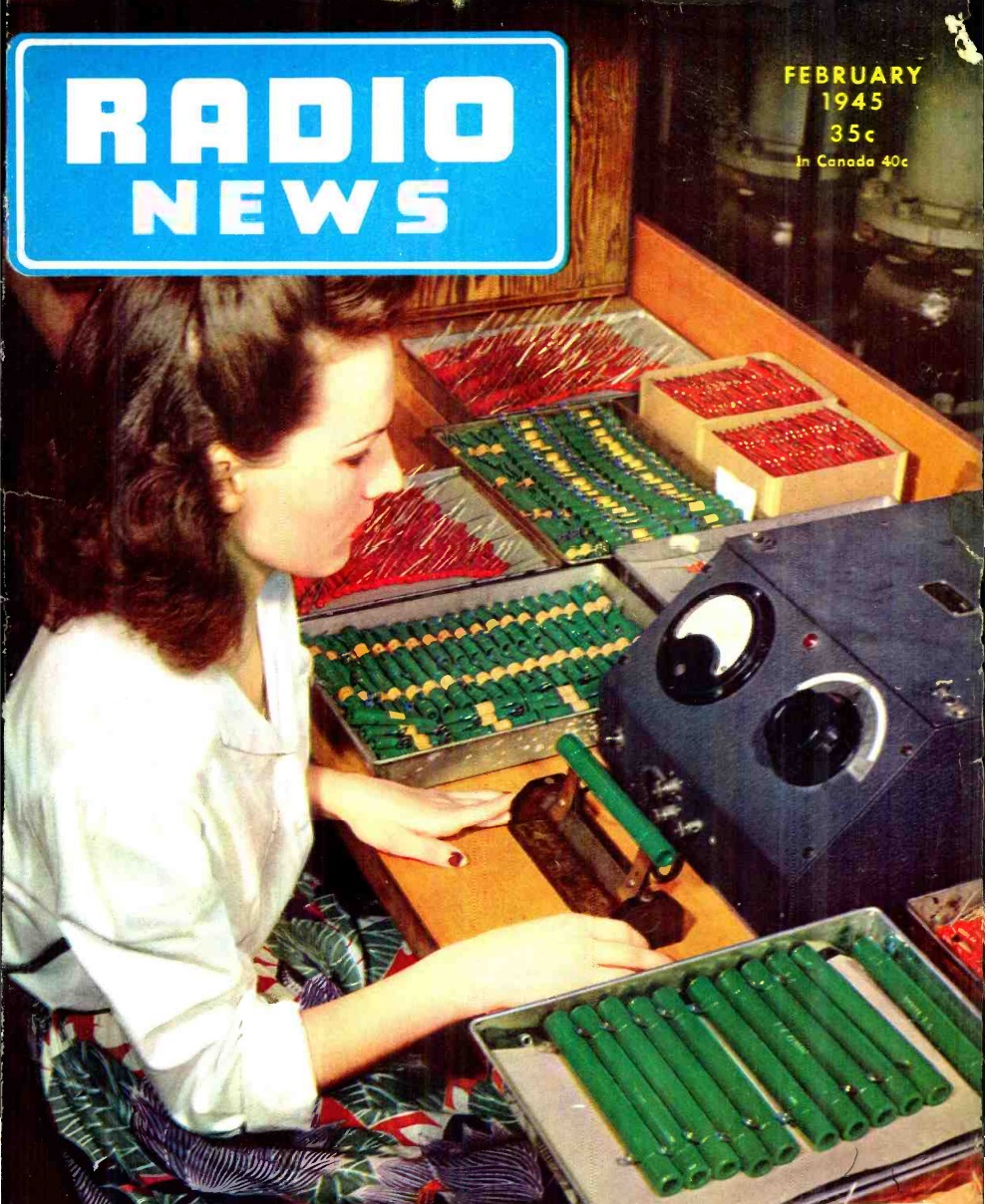
Seventy-five years ago, this Chicago war worker was testing RF chokes for their Q factor as they rolled off the assembly line of the Ohmite Manufacturing Company plant. The picture is the cover of the February 1945 issue of Radio News.


Seventy-five years ago, this Chicago war worker was testing RF chokes for their Q factor as they rolled off the assembly line of the Ohmite Manufacturing Company plant. The picture is the cover of the February 1945 issue of Radio News.
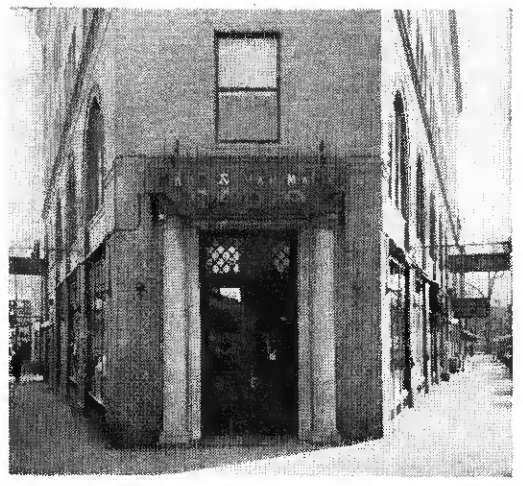
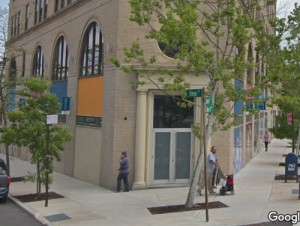 Seventy-five years ago, this trapezoidal building was the home of Mahr & Van Name, a radio dealer at 29 Beach Street, Stapleton, Staten Island, New York. The shop was featured in the February 1945 issue of Radio Retailing.
Seventy-five years ago, this trapezoidal building was the home of Mahr & Van Name, a radio dealer at 29 Beach Street, Stapleton, Staten Island, New York. The shop was featured in the February 1945 issue of Radio Retailing.
According to the magazine, both before and during the war, the shop stressed quality and material, rather than selling on a grand scale. With wartime shortages, that philosophy proved to be especially important.
Even before the war, the shop also sold table lamps, and those sales, along with service, kept the store open during the war. The owner predicted big things for both FM and TV, both of which the store had sold before the war.
As shown from the current Google Street View shot, the building still stands, although its unclear who occupies the radio shop’s former space.
 Eighty years ago this month, the February 1940 issue of Radio Retailing carried this ad for the Admiral model 12-B-5, a five tube set that covered both standard broadcast (including police at the top of the dial) and shortwave signals from 5.65 to 17.1 MHz.
Eighty years ago this month, the February 1940 issue of Radio Retailing carried this ad for the Admiral model 12-B-5, a five tube set that covered both standard broadcast (including police at the top of the dial) and shortwave signals from 5.65 to 17.1 MHz.
With Europe at war, this inexpensive set would pull in the news straight from the warring powers. I wasn’t able to find much information about this set, but it looks like an “All-American Five” with the shortwave band added. It probably did an adequate job with the strong stations, and at $12.95, it was modestly priced for a shortwave set.
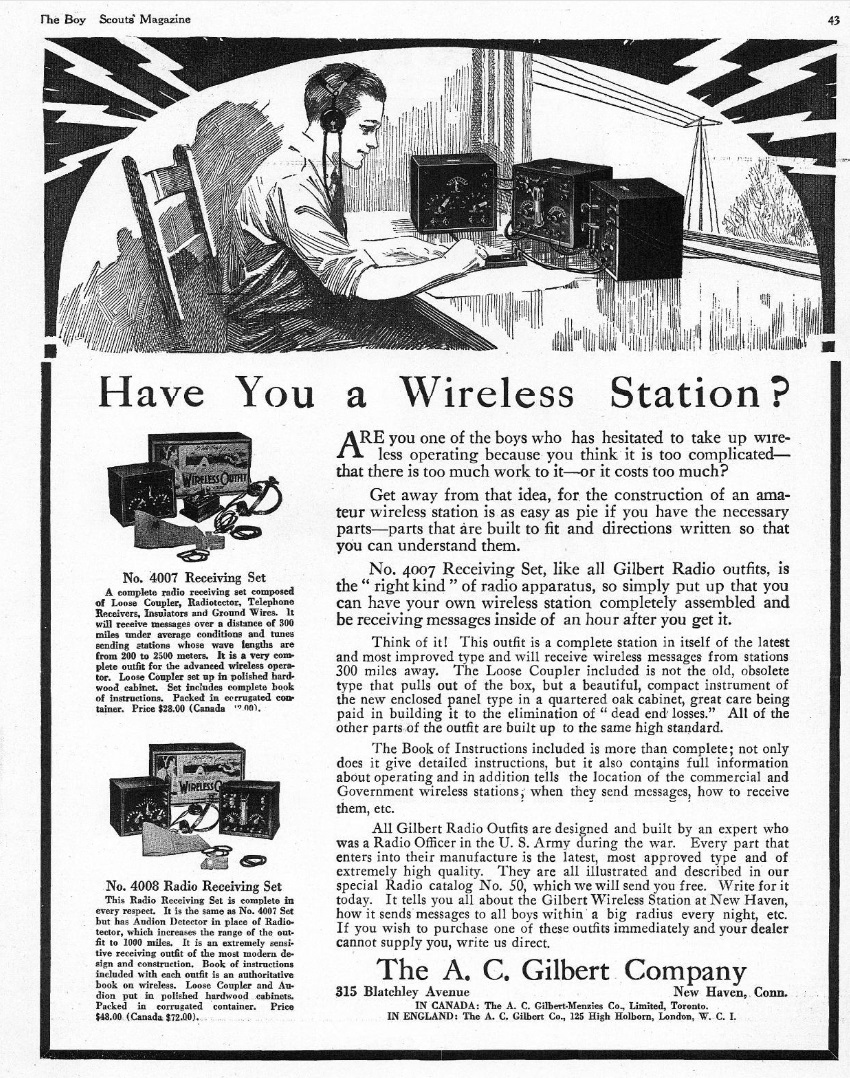 A hundred years ago this month, the February 1920 issue of Boys’ Life asked the boys of America if they had a wireless station, and offered these two receivers. Both tuned 200 – 2500 meters (120 – 1500 kHz). Each included the loose coupler, radiometer, headphones, and hardware for the antenna and ground. The Moded 4007, selling for 28.00, included a crystal detector. Model 4008 was identical, but used an audion tube for the detector. It sold for $48.
A hundred years ago this month, the February 1920 issue of Boys’ Life asked the boys of America if they had a wireless station, and offered these two receivers. Both tuned 200 – 2500 meters (120 – 1500 kHz). Each included the loose coupler, radiometer, headphones, and hardware for the antenna and ground. The Moded 4007, selling for 28.00, included a crystal detector. Model 4008 was identical, but used an audion tube for the detector. It sold for $48.
The ad promised that the set could be up and running within hours. The crystal set was said to have a range of 300 miles under ordinary conditions, with the audion set being capable of pulling in stations up to a thousand miles away.
The manufacturer, the A.C. Gilbert Company, is the same one which is famous for erector sets, chemistry sets, and other tools for young scientists. While the company no longer exists, the brand name is still in use. The set in operation here is similar to, or possibly the same, as the one we previously featured, delivered by Santa Claus in 1919.
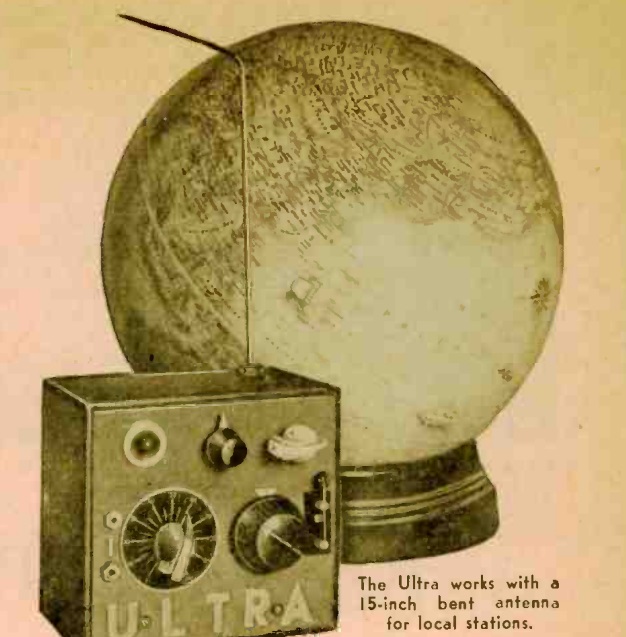 Shown here, from the February 1945 issue of Radio Craft, is a compact one-tube shortwave set dubbed “The Ultra.” It’s a superregenerative set covering 10-120 meters using a 117ZP7-GT tube. One half of the tube is the rectifier, with the other half serving as the superregenerative detector. The magazine notes that the set features post-war details such as phosphorescent panel marks. These are made from glow-in-the-dark paper coated with calcium sulphide which is carefully applied to the panel. After being exposed to the light, the markings will then glow in the dark with a purple hue.
Shown here, from the February 1945 issue of Radio Craft, is a compact one-tube shortwave set dubbed “The Ultra.” It’s a superregenerative set covering 10-120 meters using a 117ZP7-GT tube. One half of the tube is the rectifier, with the other half serving as the superregenerative detector. The magazine notes that the set features post-war details such as phosphorescent panel marks. These are made from glow-in-the-dark paper coated with calcium sulphide which is carefully applied to the panel. After being exposed to the light, the markings will then glow in the dark with a purple hue.
The set is shown here with a bent antenna, and the author notes that this antenna is sufficient for strong stations. He cautions against use of an outdoor antenna, as the set will radiate and interfere with other nearby receivers. He suggests the use of one stage of RF amplification if an outdoor antenna is used.
One shortcoming of a superregenerative receiver is that it’s practically impossible to listen to code. When the key is down, the receiver is silent, and when the key is up, the receiver is making a loud rushing noise. Since this is the exact opposite of how it should sound, the author acknowledges that this is a shortcoming. But for AM signals, it would appear that this little set would really pull in the stations.
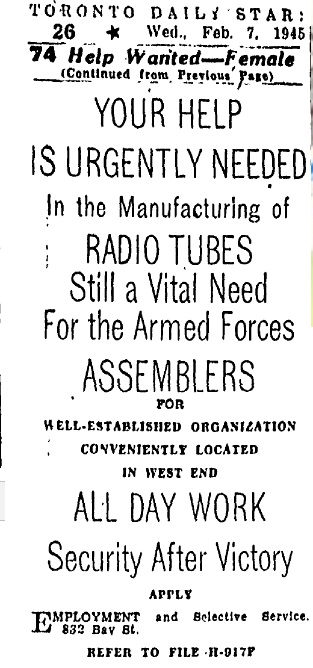 With Canada’s men off to war, it was up to the women to work in war industries, as shown by this ad from the Toronto Daily Star 75 years ago today, February 7, 1945.
With Canada’s men off to war, it was up to the women to work in war industries, as shown by this ad from the Toronto Daily Star 75 years ago today, February 7, 1945.
The ad doesn’t identify the company, but it’s a well-established organization that manufactures radio tubes. Women were needed full time to work as assemblers, and the work promised to continue after victory.
Application was to be made at an agency located at 832 Bay Street, Toronto.
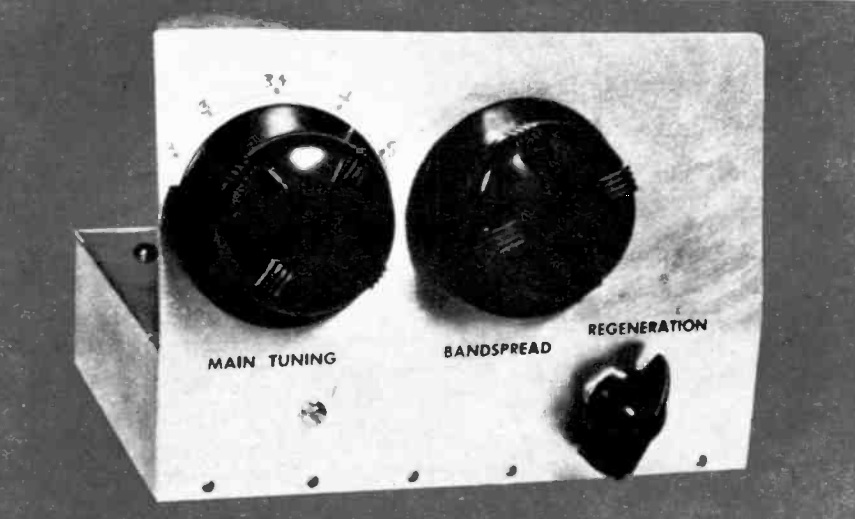 Sixty years ago this month, the February 1960 issue of Electronics Illustrated carried the plans for this one-tube regenerative shortwave tuner. The article was part 6 in the magazine’s build-it course, and the new tuner was designed to plug into the existing projects, which already included AM and FM tuners. For that reason, this receiver contains no power supply or audio amplifier. The cord with the 8-pin plug was keyed to fit the rest of the project, and the shortwave tuner took the place of the FM tuner.
Sixty years ago this month, the February 1960 issue of Electronics Illustrated carried the plans for this one-tube regenerative shortwave tuner. The article was part 6 in the magazine’s build-it course, and the new tuner was designed to plug into the existing projects, which already included AM and FM tuners. For that reason, this receiver contains no power supply or audio amplifier. The cord with the 8-pin plug was keyed to fit the rest of the project, and the shortwave tuner took the place of the FM tuner.
The circuit used a 6BC5 tube. One notable feature is that the regeneration was taken from the screen grid of the tube, rather than the plate. The regeneration control was a voltage divider which varied the positive voltage to the screen.
Since the article was part of a course, in addition to the exact schematic diagram, it also included a simplified diagram along with an explanation of each part of the circuit. From most browsers, click twice on the image for an enlarged version.
Here is the actual schematic for constructing the receiver:
This little broadcast set looks nondescript, but it was also something of a holy grail. As the February 1950 issue of Radio Electronics put it, “the one-tube loudspeaker receiver has long been the goal of constructors and experimenters.” And this set fits the bill. And as an added bonus, the addition of a single capacitor turned it into an excellent code practice oscillator.
The circuit, using a 3B7 tube, is described as a “special type of utraudion with a certain amount of superregeneration.” An outdoor antenna was recommended, but near powerful stations, the article noted that 25-50 feet were adequate. In remote areas, a hundred feet might be necessary.
The set used a permeanility tuner, which is likely unobtainium. However, the circuit could probably be modified to use a fixed inductor and variable capacitor.
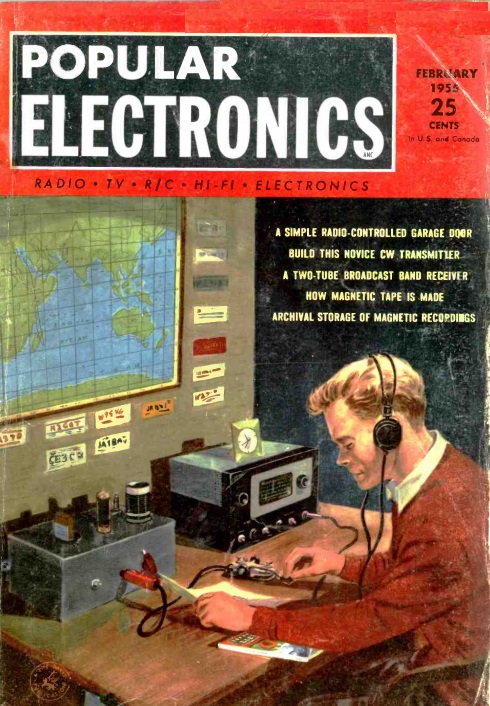 Sixty-five years ago this month, the February 1955 issue of Popular Electronics carried the plans for this CW transmitter especially designed for the Novice. The rig used a single 6AQ5 tube to put out a signal on the 80 or 40 meter bands. Tuning up was accomplished by using a 6 volt bulb attached to a 1-1/4″ loop of wire. This was held near the transmitter’s coil and the rig tuned for maximum brightness.
Sixty-five years ago this month, the February 1955 issue of Popular Electronics carried the plans for this CW transmitter especially designed for the Novice. The rig used a single 6AQ5 tube to put out a signal on the 80 or 40 meter bands. Tuning up was accomplished by using a 6 volt bulb attached to a 1-1/4″ loop of wire. This was held near the transmitter’s coil and the rig tuned for maximum brightness.
To keep the circuit as simple as possible (and keep hum producing components at bay), the transmitter did not contain its own power supply. Instead, it required about 250 volts DC at 1 amp. “Most experimenters keep a small power supply of this type on hand for general use.” For those who didn’t, the magazine suggested that they were cheaply available as surplus. For portable use, batteries could even be used.
One interesting feature was the use of an octal tube socket for the crystal socket. The pins were such that a crystal would fit. The unused pins were used as a terminal strip for other components.
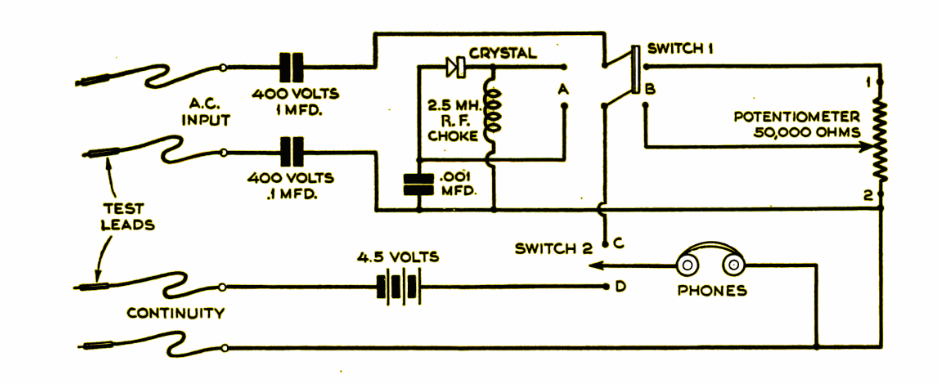 Seventy-five years ago this month, the January 1945 issue of Popular Science showed this simple tester for troubleshooting radio circuits if problems “can’t be located by guesswork”. The top portion was an audio or radio-frequency circuit tracer. You worked backwards from the speaker to locate the source of the trouble. The bottom section was a continuity tester. If you heard a click in the headphones, then you knew there was continuity. To test a capacitor, you would connect it and hear a click. If you waited a few seconds and repeated the process, a weaker click would tell you that the capacitor was holding its charge.
Seventy-five years ago this month, the January 1945 issue of Popular Science showed this simple tester for troubleshooting radio circuits if problems “can’t be located by guesswork”. The top portion was an audio or radio-frequency circuit tracer. You worked backwards from the speaker to locate the source of the trouble. The bottom section was a continuity tester. If you heard a click in the headphones, then you knew there was continuity. To test a capacitor, you would connect it and hear a click. If you waited a few seconds and repeated the process, a weaker click would tell you that the capacitor was holding its charge.